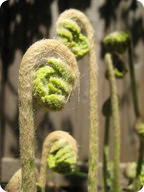7.6: Vascular Plants
- Page ID
- 2984
\( \newcommand{\vecs}[1]{\overset { \scriptstyle \rightharpoonup} {\mathbf{#1}} } \)
\( \newcommand{\vecd}[1]{\overset{-\!-\!\rightharpoonup}{\vphantom{a}\smash {#1}}} \)
\( \newcommand{\id}{\mathrm{id}}\) \( \newcommand{\Span}{\mathrm{span}}\)
( \newcommand{\kernel}{\mathrm{null}\,}\) \( \newcommand{\range}{\mathrm{range}\,}\)
\( \newcommand{\RealPart}{\mathrm{Re}}\) \( \newcommand{\ImaginaryPart}{\mathrm{Im}}\)
\( \newcommand{\Argument}{\mathrm{Arg}}\) \( \newcommand{\norm}[1]{\| #1 \|}\)
\( \newcommand{\inner}[2]{\langle #1, #2 \rangle}\)
\( \newcommand{\Span}{\mathrm{span}}\)
\( \newcommand{\id}{\mathrm{id}}\)
\( \newcommand{\Span}{\mathrm{span}}\)
\( \newcommand{\kernel}{\mathrm{null}\,}\)
\( \newcommand{\range}{\mathrm{range}\,}\)
\( \newcommand{\RealPart}{\mathrm{Re}}\)
\( \newcommand{\ImaginaryPart}{\mathrm{Im}}\)
\( \newcommand{\Argument}{\mathrm{Arg}}\)
\( \newcommand{\norm}[1]{\| #1 \|}\)
\( \newcommand{\inner}[2]{\langle #1, #2 \rangle}\)
\( \newcommand{\Span}{\mathrm{span}}\) \( \newcommand{\AA}{\unicode[.8,0]{x212B}}\)
\( \newcommand{\vectorA}[1]{\vec{#1}} % arrow\)
\( \newcommand{\vectorAt}[1]{\vec{\text{#1}}} % arrow\)
\( \newcommand{\vectorB}[1]{\overset { \scriptstyle \rightharpoonup} {\mathbf{#1}} } \)
\( \newcommand{\vectorC}[1]{\textbf{#1}} \)
\( \newcommand{\vectorD}[1]{\overrightarrow{#1}} \)
\( \newcommand{\vectorDt}[1]{\overrightarrow{\text{#1}}} \)
\( \newcommand{\vectE}[1]{\overset{-\!-\!\rightharpoonup}{\vphantom{a}\smash{\mathbf {#1}}}} \)
\( \newcommand{\vecs}[1]{\overset { \scriptstyle \rightharpoonup} {\mathbf{#1}} } \)
\( \newcommand{\vecd}[1]{\overset{-\!-\!\rightharpoonup}{\vphantom{a}\smash {#1}}} \)
\(\newcommand{\avec}{\mathbf a}\) \(\newcommand{\bvec}{\mathbf b}\) \(\newcommand{\cvec}{\mathbf c}\) \(\newcommand{\dvec}{\mathbf d}\) \(\newcommand{\dtil}{\widetilde{\mathbf d}}\) \(\newcommand{\evec}{\mathbf e}\) \(\newcommand{\fvec}{\mathbf f}\) \(\newcommand{\nvec}{\mathbf n}\) \(\newcommand{\pvec}{\mathbf p}\) \(\newcommand{\qvec}{\mathbf q}\) \(\newcommand{\svec}{\mathbf s}\) \(\newcommand{\tvec}{\mathbf t}\) \(\newcommand{\uvec}{\mathbf u}\) \(\newcommand{\vvec}{\mathbf v}\) \(\newcommand{\wvec}{\mathbf w}\) \(\newcommand{\xvec}{\mathbf x}\) \(\newcommand{\yvec}{\mathbf y}\) \(\newcommand{\zvec}{\mathbf z}\) \(\newcommand{\rvec}{\mathbf r}\) \(\newcommand{\mvec}{\mathbf m}\) \(\newcommand{\zerovec}{\mathbf 0}\) \(\newcommand{\onevec}{\mathbf 1}\) \(\newcommand{\real}{\mathbb R}\) \(\newcommand{\twovec}[2]{\left[\begin{array}{r}#1 \\ #2 \end{array}\right]}\) \(\newcommand{\ctwovec}[2]{\left[\begin{array}{c}#1 \\ #2 \end{array}\right]}\) \(\newcommand{\threevec}[3]{\left[\begin{array}{r}#1 \\ #2 \\ #3 \end{array}\right]}\) \(\newcommand{\cthreevec}[3]{\left[\begin{array}{c}#1 \\ #2 \\ #3 \end{array}\right]}\) \(\newcommand{\fourvec}[4]{\left[\begin{array}{r}#1 \\ #2 \\ #3 \\ #4 \end{array}\right]}\) \(\newcommand{\cfourvec}[4]{\left[\begin{array}{c}#1 \\ #2 \\ #3 \\ #4 \end{array}\right]}\) \(\newcommand{\fivevec}[5]{\left[\begin{array}{r}#1 \\ #2 \\ #3 \\ #4 \\ #5 \\ \end{array}\right]}\) \(\newcommand{\cfivevec}[5]{\left[\begin{array}{c}#1 \\ #2 \\ #3 \\ #4 \\ #5 \\ \end{array}\right]}\) \(\newcommand{\mattwo}[4]{\left[\begin{array}{rr}#1 \amp #2 \\ #3 \amp #4 \\ \end{array}\right]}\) \(\newcommand{\laspan}[1]{\text{Span}\{#1\}}\) \(\newcommand{\bcal}{\cal B}\) \(\newcommand{\ccal}{\cal C}\) \(\newcommand{\scal}{\cal S}\) \(\newcommand{\wcal}{\cal W}\) \(\newcommand{\ecal}{\cal E}\) \(\newcommand{\coords}[2]{\left\{#1\right\}_{#2}}\) \(\newcommand{\gray}[1]{\color{gray}{#1}}\) \(\newcommand{\lgray}[1]{\color{lightgray}{#1}}\) \(\newcommand{\rank}{\operatorname{rank}}\) \(\newcommand{\row}{\text{Row}}\) \(\newcommand{\col}{\text{Col}}\) \(\renewcommand{\row}{\text{Row}}\) \(\newcommand{\nul}{\text{Nul}}\) \(\newcommand{\var}{\text{Var}}\) \(\newcommand{\corr}{\text{corr}}\) \(\newcommand{\len}[1]{\left|#1\right|}\) \(\newcommand{\bbar}{\overline{\bvec}}\) \(\newcommand{\bhat}{\widehat{\bvec}}\) \(\newcommand{\bperp}{\bvec^\perp}\) \(\newcommand{\xhat}{\widehat{\xvec}}\) \(\newcommand{\vhat}{\widehat{\vvec}}\) \(\newcommand{\uhat}{\widehat{\uvec}}\) \(\newcommand{\what}{\widehat{\wvec}}\) \(\newcommand{\Sighat}{\widehat{\Sigma}}\) \(\newcommand{\lt}{<}\) \(\newcommand{\gt}{>}\) \(\newcommand{\amp}{&}\) \(\definecolor{fillinmathshade}{gray}{0.9}\)
How do these trees and mosses differ?
The trees tower in the sky, while the mosses carpet the forest floor. Mosses, like the first plants, are restricted to life near the ground because they lack vascular system. Only with a vascular system can these trees transport sugars, nutrients, and water up and down their tall trunks. The evolution of the vascular system was a big step in the evolutionary history of plants.
Vascular Seedless Plants
For these plants, the name says it all. Vascular seedless plants have vascular tissue but do not have seeds. Remember that vascular tissue is specialized tissue that transports water and nutrients throughout the plant. The development of vascular tissue allowed these plants to grow much taller than nonvascular plants, forming ancient swamp forests. Most of these large vascular seedless plants are now extinct, but their smaller relatives still remain. Vascular tissue includes xylem, which transports water from the roots to the rest of the plant; and phloem, which transports sugars and nutrients from the leaves throughout the plant.
Seedless vascular plants include:
- Clubmosses.
- Ferns.
- Horsetails.
- Whisk ferns.
Clubmosses
Clubmosses are so named because they can look similar to mosses (Figure below). Clubmosses are not true mosses, though, because they have vascular tissue. The “club” part of the name comes from club-like clusters of sporangia found on the plants. One type of clubmoss is called the "resurrection plant" because it shrivels and turns brown when it dries out but then quickly turns green when watered again.

Ferns
Ferns are the most common seedless vascular plants (Figure below). They usually have large divided leaves called fronds. In most ferns, fronds develop from a curled-up formation called a fiddlehead (Figure below). The fiddlehead looks like the curled decoration on the end of a stringed instrument, such as a fiddle. Leaves unroll as the fiddleheads grow and expand. Ferns grow in a variety of habitats, ranging in size from tiny aquatic species to giant tropical plants.


Horsetails
Horsetails have hollow, ribbed stems and are often found in marshes (Figure below). Whorls of tiny leaves around the stem make the plant look like a horse's tail, but these soon fall off and leave a hollow stem that can perform photosynthesis. This is unusual since photosynthesis most often occurs in leaves. The stems are rigid and rough to the touch because they are coated with a scratchy mineral. Because of their scratchy texture, these plants were once used as scouring pads for cleaning dishes.

Whisk Ferns
Whisk ferns have green branching stems with no leaves, so they resemble a whisk broom (Figure below). Another striking feature of the whisk ferns is its spherical yellow sporangia.

Summary
- Vascular seedless plants have vascular tissue, a specialized tissue that transports water and nutrients throughout the plant.
- Vascular seedless plants include the club mosses, ferns, whisk ferns, and horsetails.
Explore More
Use the resource below to answer the questions that follow.
- Seedless Vascular Plants at http://www.youtube.com/watch?v=VKS-smv1g7A (1:32)
- How many species of ferns and horsetails have scientists identified today?
- How do scientists feel the present day diversity of ferns and horsetails compares to the diversity of these plants before the appearance of plants with seeds?
- What sex are the spores of a fern?
- What happens to the fertilized embryo of a fern?
Review
- Why are the vascular seedless plants different from the nonvascular plants?
- What are two examples of vascular seedless plants?
- What is the role of vascular tissue in plants?
- What was the primary result of the evolution of vascular tissue in plants?
- What is the most common seedless vascular plant?

